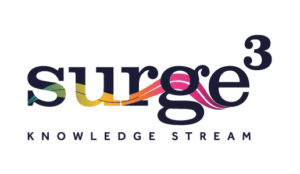Another in our occasional series of blogs in which we will revisit some of the articles that we have found most useful over the years. This week we are going to focus on Ries & Trout’s three 1972 Ad Age articles ‘The Positioning Era Cometh’; Positioning Cuts Through Chaos’ and How To Position Your Product’ and their subsequent 1981 book ‘The Battle for Your Mind’.
“I studied [‘The Battle for Your Mind’] as an undergraduate in the 1980s and the fact that it is one of the few books I can remember nearly 35 years later … both for its content and cover –iconic brands bursting out of a man’s head in glorious technicolour – is a testament to its impact, and that it is still relevant today speaks to the importance of the message” Adam Riley, Founder, Decision Architects
Ries and Trout opened their 1972 articles with an observation that “[in today’s market] there are just too many products, too many companies [and] too much marketing ‘noise’. Yes, that was 1972 … (plus ça change, plus c’est la même chose).
To succeed they argued a brand had to create and own ‘a position’ in the consumer’s mind and cited Wednesday April 7, 1971 as the day the marketing world changed. David Ogilvy had taken out a full-page ad in the New York Times to set out his new advertising philosophy and outlined 38 points that started with ‘the results of your campaign depend less on how we write advertising than on how your product is positioned’.
Ries and Trout charted the evolution from the 1950s product era to the 1960s image era to the 1970s positioning era – which addressed the challenges posed by the ‘new’ over-communicated to, media-blitzed, consumer. Their work described how brands should take or create a “position” in a prospective consumer’s mind … reflecting or addressing its own strengths and weaknesses as well as those of its competitors …vis-à-vis the needs of the consumer.
And while positioning begins with the product – the approach really talks to the relationship between the product and the consumer … and by ‘owning’ some space in the mind of the consumer – by being first or offering something unique or differentiated – a brand can make itself heard above the clamor for attention – in their words – wheedling its way into the collective subconscious.
Ries and Trout laid out ‘How To Position Your Product’ with six questions …
- What position do we own? The answer is in the marketplace
- What position do we want? Select a position that has longevity
- Who must we ‘out-gun’? Avoid a confrontation with market leaders
“You can’t compete head-on against a company that has a strong position. You can go around, under or over, but never head-on”
- Do we have enough money (to achieve our objective)?
- Can we stick it out (in the face of pressure to change / compromise)
- Does what we are saying about ourselves match our position?
Its then easy to see the DNA of these questions in the ‘choices cascade’ set out by Monitor Alumni, Roger Martin, and P&G CEO (President & Chairman), A.G. Lafley, in their 2013 book ‘Playing to Win’ … the ‘where to play’, and ‘how to win’ questions culminate in a positioning – whether you call it a ‘benefit edge’ or a USP … it is a statement of position and is at the core of our growth methodology.
Just re-reading the 1972 articles you get both a fascinating insight into the marketing environment of 50 years ago, but also a sense of how relevant these articles are to contemporary marketing practice.
www.ries.com/wp-content/uploads/2015/09/Positioning-Articles002.pdf
“For anybody interested in the psychology of consumer behaviour, Ries and Trout’s work really made the marketing discipline a lot more interesting, and as a student in the 80s their book really ignited my interest in marketing strategy and insight … what we used to call market research!” Adam Riley, Founder, Decision Architects



